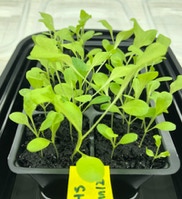Pyrolytic Treatment of Soils Contaminated with Heavy Petroleum Hydrocarbons
Turning Oil Spills into
Fertile Soil
Plants show significantly higher germination and growth in pyrolyzed soils when compared to contaminated or incinerated soils.

Untreated Soil A
TPH: 18,000 mg/kg

Soil A Pyrolyzed in rotary kiln at 420ºC and 15 min residence time
TPH: Not Detectable
